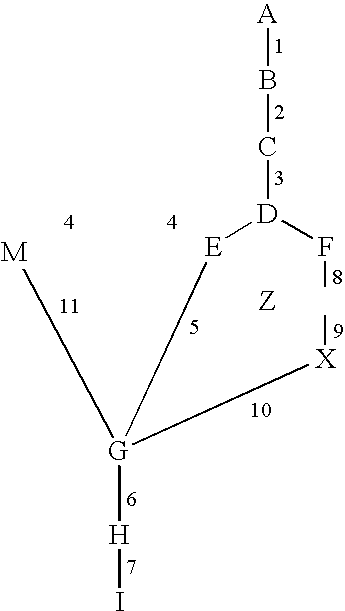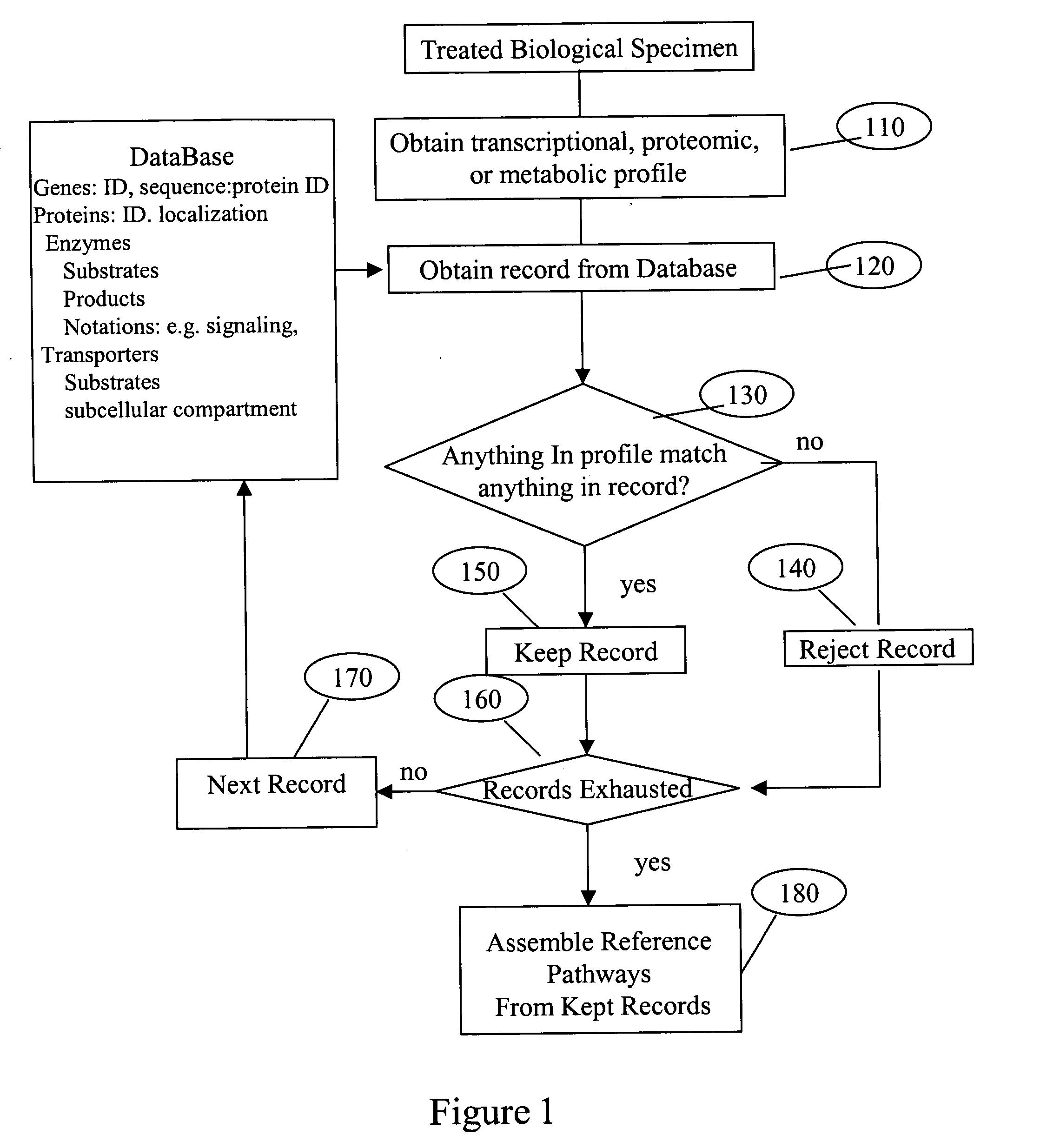System and process of determining a biological pathway based on a treatment of a biological specimen
a biological pathway and process technology, applied in the field of system and process of determining a biological pathway based on a biological specimen treatment, can solve the problems of currently limited analysis of gene expression data, and achieve the effect of quick discernmen
- Summary
- Abstract
- Description
- Claims
- Application Information
AI Technical Summary
Benefits of technology
Problems solved by technology
Method used
Image
Examples
example i
The Use of PathExplore to Define Mechanisms of Gene Regulation
[0131] In order to test the usefulness of PathExplore in gene regulation discovery, sample microarray data was analyzed. Two microarray chips were used to analyze RNA isolated from A. thaliana treated under identical conditions except for the presence or absence variations of light. The results of the microarray chips were analyzed with Affymetrix Suite 4.0.™ For each condition, a biological replicate was also analyzed (a total of four total microarray chips). The results for both biological replicates (light-treated vs. dark) were then analyzed with PathExplore to identify genes involved in amino acid biosynthesis that were regulated by light. Ammonia, which is a milestone, was included in this analysis, because it plays a key role in glutamine biosynthesis. This analysis indicated that three genes involved in pathways that could be considered “de novo” ammonia “biosynthesis” were all induced by light, which are depicte...
PUM
| Property | Measurement | Unit |
|---|---|---|
| Energy | aaaaa | aaaaa |
| energy | aaaaa | aaaaa |
| width | aaaaa | aaaaa |
Abstract
Description
Claims
Application Information
 Login to View More
Login to View More - R&D
- Intellectual Property
- Life Sciences
- Materials
- Tech Scout
- Unparalleled Data Quality
- Higher Quality Content
- 60% Fewer Hallucinations
Browse by: Latest US Patents, China's latest patents, Technical Efficacy Thesaurus, Application Domain, Technology Topic, Popular Technical Reports.
© 2025 PatSnap. All rights reserved.Legal|Privacy policy|Modern Slavery Act Transparency Statement|Sitemap|About US| Contact US: help@patsnap.com



